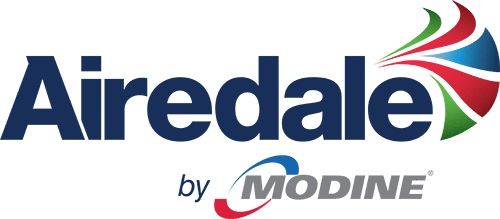Retrofitting Legacy Data Centers for Efficient Cooling
Legacy data centers weren’t built for today’s workloads. High-density compute, accelerated AI models, and increasingly stringent sustainability metrics strain systems that were considered state of the art not long ago. Inadequate cooling infrastructure is often the limiting factor: inefficient, rigid, and unable to scale to meet demand.
Building an entirely new facility isn’t always an option. Full facility rebuilds are rarely feasible due to budget constraints, operational risks, and space limitations. Instead, you can pragmatically solve your cooling problems by retrofitting your existing space. These targeted cooling upgrades can lower the risk of disrupting operations and introduce measurable performance improvements.
With the right strategy, you can increase your facility’s thermal efficiency, lower its energy consumption, and future-proof your environment, all without rebuilding from scratch.
Challenges of Legacy Cooling Infrastructure
Current power densities far exceed the capacity of conventional, outdated cooling systems. As workloads increasingly shift toward AI, HPC, and dense virtualization, many legacy environments fall short, both in capacity and efficiency.
- Thermal limits: Older facilities often rely on underpowered CRAC or CRAH units, which struggle to deliver uniform temperatures across modern server racks. Hot spots and inconsistent airflow are all too common.
- Escalating costs: Energy bills are inflated by inefficient air distribution, lack of containment, and continuous overcooling. Older systems usually operate at a lower coefficient of performance (COP) than more modern alternatives.
- Regulatory pressure: Operators face growing demands to reduce their facility’s carbon impact. It becomes much more difficult to reach sustainability compliance goals when the cooling infrastructure is based around outdated power-hungry tech and legacy refrigerants.
Inflexible architectures only add to the hurdles. Fixed ductwork, limited floor space, and legacy control systems restrict upgrade options and force operators to work around these constraints rather than resolve them.
Evaluating Your Facility for Cooling Retrofit Potential
A successful retrofit starts with a comprehensive evaluation. Facility operators need a detailed understanding of both current performance and future demand.
- Thermal audit and gap analysis: Baseline temperature mapping identifies inefficiencies and airflow issues. Combined with an assessment of system age and redundancy, this analysis highlights problems and should inform your upgrade priorities.
- Workload forecasting: Cooling systems must align with projected IT loads. Evaluating your facility’s current usage against its anticipated compute density will determine whether existing infrastructure can scale or if the constraints will limit capacity.
- Physical limitations: Older sites may have structural barriers that can complicate retrofits. Floor loading, plenum depth, pipe routing, and rack layout all influence which retrofitting solutions are viable.
- Containment architecture: Legacy data centers may have been designed when hot and cold air mixing in open aisle architectures was commonplace. Low ceiling heights are often a barrier to putting ducting in place to rectify this.
Predictive modeling tools simulate potential upgrades before any changes are made. These tools can tell you what improvements you can expect in PUE, energy cost savings, and payback periods. This knowledge, in turn, can validate ROI for stakeholders before they commit to the project.
Advanced Cooling Technologies Suitable for Retrofit Projects
Legacy data centers don’t need stem-to-stern overhauls to benefit from modern cooling tech innovations. There are several advanced cooling technologies specifically engineered to integrate with your facility’s existing infrastructure. They allow you to avoid major disruptions while taking advantage of immediate gains.
Containment Systems
In addition to chimney cabinets, hot aisle and cold aisle containment systems isolate thermal zones and prevent air mixing. These low-impact upgrades increase efficiency and improve airflow management without altering the facility’s current layout or increasing its footprint. Containment systems can also vary in complexity. They can entail simply adding blanking plates to empty racks or dedicated enclosures that keep conditioned supply air and heated return air completely separate.
Modular Liquid Cooling
Liquid-to-air coolers and rear door heat exchangers are scalable cooling options for higher-density racks. Many of these systems can be deployed rack-by-rack to preserve uptime and extend the utility of existing air-cooled designs.
Evaporative and Adiabatic Solutions
In many cases, hybrid deployments yield the best results. They allow operators to extend the value of their current equipment by layering in newer technologies that enhance performance, improve resiliency, and contain costs over Existing perimeter cooling can be used for peripheral heat loads while the direct-to-chip liquid cooling system manages the heat load from the chip. This is achievable as long as a CDU can be installed with associated fluid management systems.
Modern controls are central to reaping the benefits of these solutions. They allow data center operators to further optimize efficiency and sustainability by utilizing available chilled water more effectively, fine-tuning supply air temperatures, and reducing fan speeds.
Managing the Retrofit Process Effectively
Retrofitting modern cooling upgrades into live data centers requires surgical precision. Without meticulous planning, even minor disruptions can balloon into major issues. As part of a structured, phased, and carefully executed plan, these strategies help to minimize risk and avoid downtime while keeping operations online.
Staged implementation requires you to break the project into defined phases. This allows some sections of the facility to remain active while others undergo upgrades. This approach also allows you to validate each step before moving forward.
Tight coordination is essential. Scheduling retrofits during planned maintenance windows and working in tandem with facility teams reduces the chance of unplanned downtime. To make this work, clear communication across departments is non-negotiable.
Risk oversight demands that project managers, OEMs, engineers, and contractors align early. Regular checkpoints, contingency planning, and detailed documentation help keep the process transparent and controlled.
Successful retrofits are collaborative by design. You can avoid rework and instill shareholder confidence by planning your upgraded cooling strategy to work around facility constraints, operational priorities, and long-term IT roadmaps.
Measuring Success: Efficiency Gains and Long-Term Benefits
Retrofits should deliver more than theoretical improvements. For your investment to have a sustained impact, you need to be able to validate performance changes after implementation.
Power Usage Effectiveness (PUE)
As a primary benchmark for cooling efficiency, PUE reflects how effectively a data center’s IT equipment uses energy. Effective retrofits typically result in significant PUE reductions, especially when the upgrades introduce containment or liquid cooling.
Operational Savings
Lower energy usage translates directly to cost reduction. Facilities often see a significant drop in electricity consumption up front as well as fewer maintenance expenses, given the reduced wear on equipment in the long term.
Workload Adaptability
Modern cooling systems support higher rack densities and changing IT loads without major reconfiguration. This flexibility is critical as AI, edge computing, and hybrid cloud deployments become more prevalent.
Case Studies
These real-world examples illustrate the benefits of retrofitting your cooling system.
- A ScienceDirect study showed that after retrofitting cooling technologies, one data center experienced a 47.2% improvement in RCI (Rack Cooling Index) and a 22.7% increase in RHI (Return Heat Index).
- After retrofitting its cooling systems, Google’s data centers D and E reported reduced quarterly PUEs from 1.22 and 1.19 in 2011 to 1.14 in the first quarter of 2012.
These case studies demonstrate how well-planned and cautiously executed cooling system retrofits can result in significant efficiency gains and long-term operational benefits.
Start with the Right Strategy
Retrofitting legacy data centers strategically increases cooling efficiency, improves reliability, and meets rising sustainability targets. It manages to do all this without building from the ground up or expanding the data center’s footprint.
Cooling system upgrades can extend the lifespan of existing infrastructure while helping data center operators get more out of their capital investments. When performed correctly, these retrofitting projects lead to measurable gains in energy performance, rack density, and long-term flexibility.
As compute loads grow and efficiency standards tighten, the pressure on legacy facilities to keep up will only increase. The retrofitting strategy keeps pace without scrapping existing infrastructure. Planning for change ahead of time gives these facilities more control over how and when they evolve.





